March 11, 2006
Reality is an Activity of the Most August Imagination

Andrew Hahn, the curator (and painter, his solo is scheduled for May at Sister in ChinaTown), told me of his delight of his choice of the cover of the Camus "Stranger". He was running on intuition (not his words). Later, he realised how appropriate it was that mimes graced the announcement for the show. Mimes are using fragments to represent a whole, to conjure a whole in our minds. It is a congress of imagination, theirs for evoking a scene and ours for completing it.
I can't recount our conversation exactly ....shaking my fist in the mirror: why don't I remember to pack the tape recorder? He talked about CalArts and how Continental Theory was an overlay on art that -as it spent itself out- made him realise that his original love for fiction was an overlay too, and a better one than the ballroom-dance-by-the-numbers that 80's legacy art theory was for illuminating art. Someday, I'm going to record, interview and podcast with a vengance, just wait.
Back to the show...
It was something about apprehension that puts it all together for him. Andrew is seizing a fragment here, another there and trusting the dotted lines of imagination -ours and his- to put the picture together, a picture he is feeling out, one he does not know in advance. He's exploring, antennas fully deployed.
It is important that ours are delpoyed too.
I reprise from the announcement post, a shorter selection from Wikipedia on Wallace Stevens:Imagination and Reality
Stevens is very much a poet of ideas. ?The poem must resist the intelligence / Almost successfully,? he wrote. His main ideas revolve around the interplay between imagination and reality and the relation between consciousness and the world. In Stevens, "imagination" is not equivalent to consciousness, or "reality" to the world as it exists outside our minds. Reality is the product of the imagination as it shapes the world. Because it is constantly changing as we attempt to find imaginatively satisfying ways to perceive the world, reality is an activity, not a static object. We approach reality with a piecemeal understanding, putting together parts of the world in an attempt to make it seem coherent. To make sense of the world is to construct a worldview through an active exercise of the imagination. This is no dry philosophical activity, but a passionate engagement in finding order and meaning.
The Didion in my colophon is proof that I am a fellow seeker of this sort of thing.
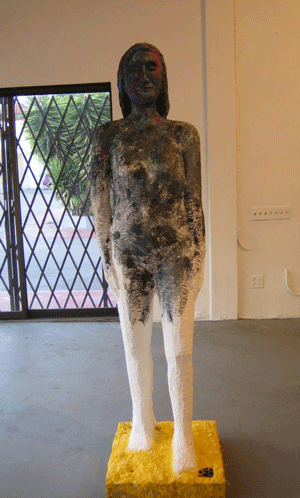
Ruby Neri "Standing girl" 2006, plaster & acrylic paint.
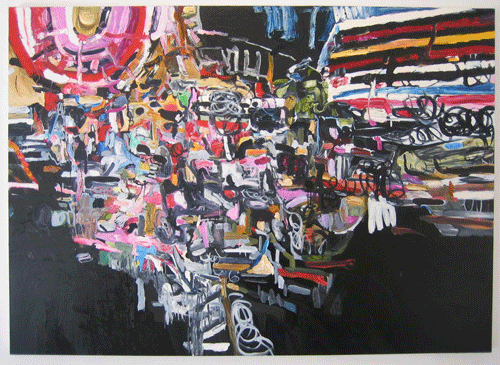
Pam Jorden "Untitled" 2005, oil on canvas.
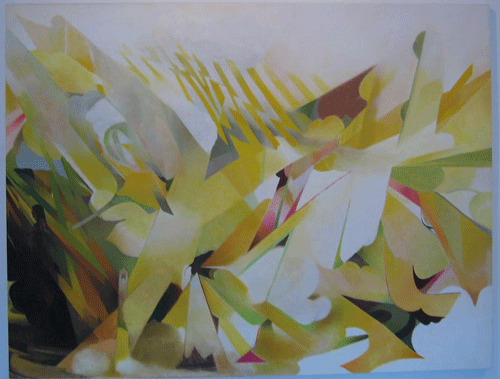
Tyler Vlahovitch "FunPark" 2003, oil on canvas.
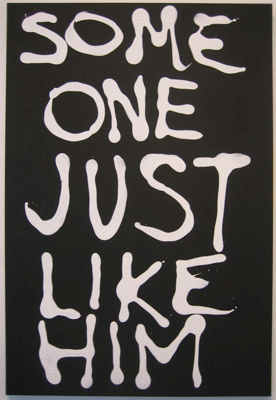
Mitchell Syrop "Someone Just Like Him" 2005, paint on board.
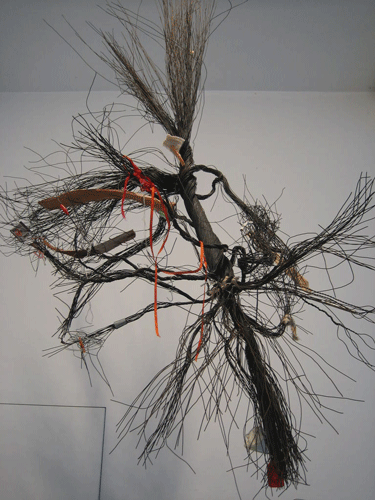
David Hughes "Untitled" 2005, various elements.
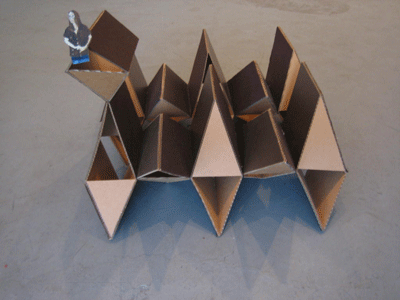
Alice K?tnitz "Untitled" 2002, cardboard, felt, vinyl.
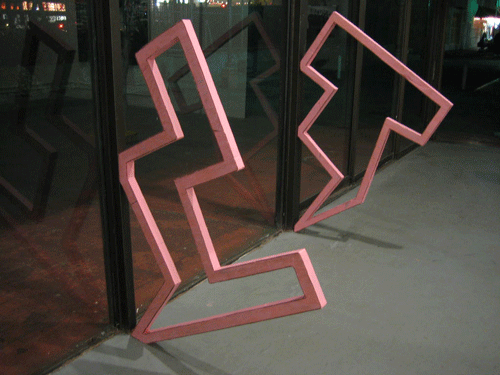
Patrick Nickel "Poppyseed + Clover" 2004, plywood, cardboard.
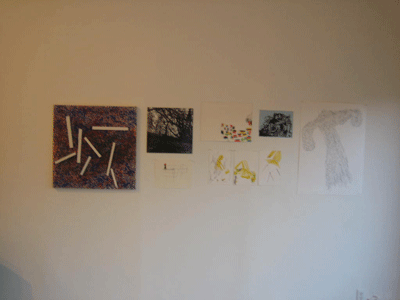
Wall of drawings, from left:
(Pan Left)
Ruby Neri "Inside the Blue" 2005, acrylic + wood on canvas.
Mitchell Syrop "Untitled" 2006, photo on board.
Alice K?nitz "Untitled" 2005, pencil + thing on paper.
Pam jorden "Untitled" 2005, paint + adhesive on paper.
(Pan Center)
David hughes "Untitled" 2006, ink on paper.
Tyler Vlahovich "Untitled" 2000, ink on paper.
Patrick Nickel "No Title" 1998, pencil on paper.
(Pan Right)
UPDATE:
Andrew sent in this postscript:when i said that that title ('reality...') was a personal philosophy for stevens, and that the activity, for him, was writing, i was thinking about this quote: 'it is a world of words to the end of it / in which nothing solid is its solid self.' i can't remember what poem that's from, but in 'reality...', he writes: 'there was an insolid billowing of the solid', which i think is how art should be experienced, first tangibly, and then within one's own mind. -hahnPosted by Dennis at March 11, 2006 12:03 PM
Leave a comment